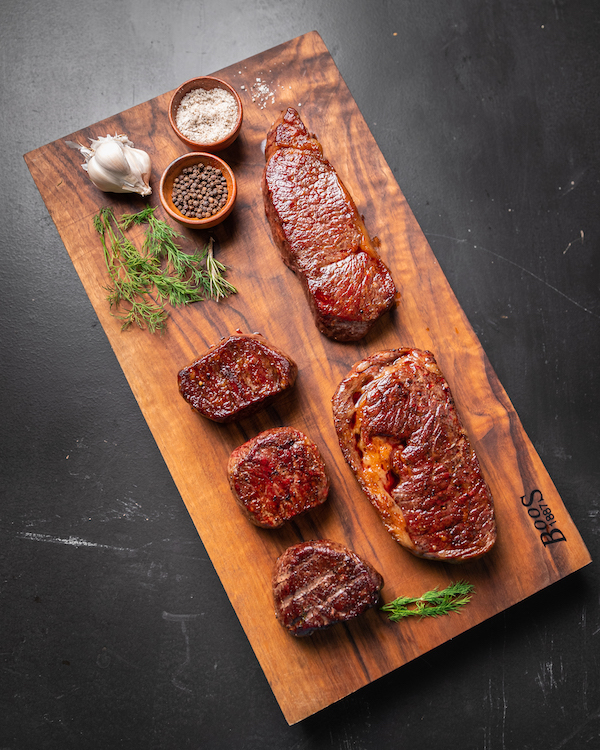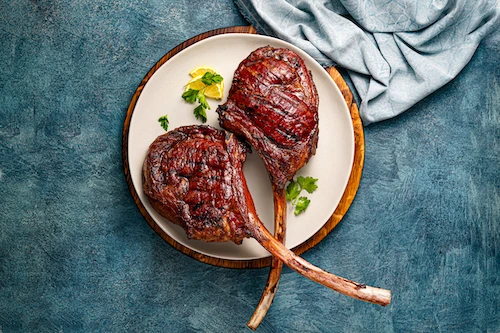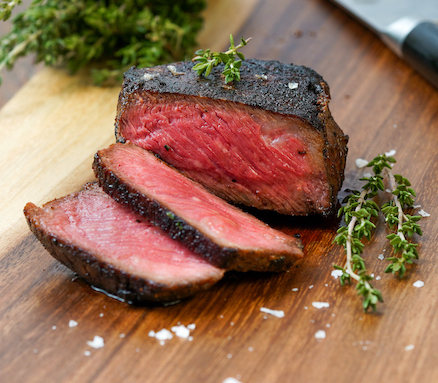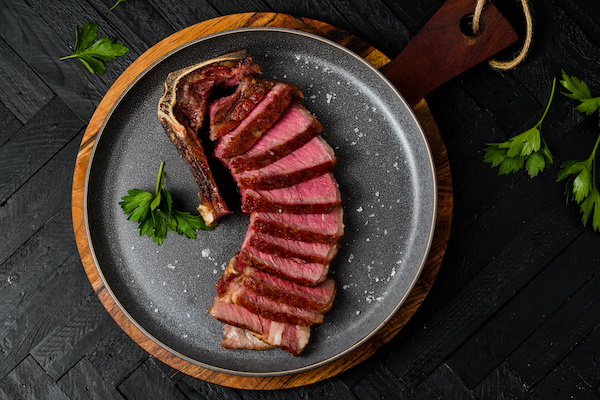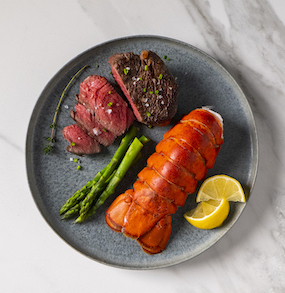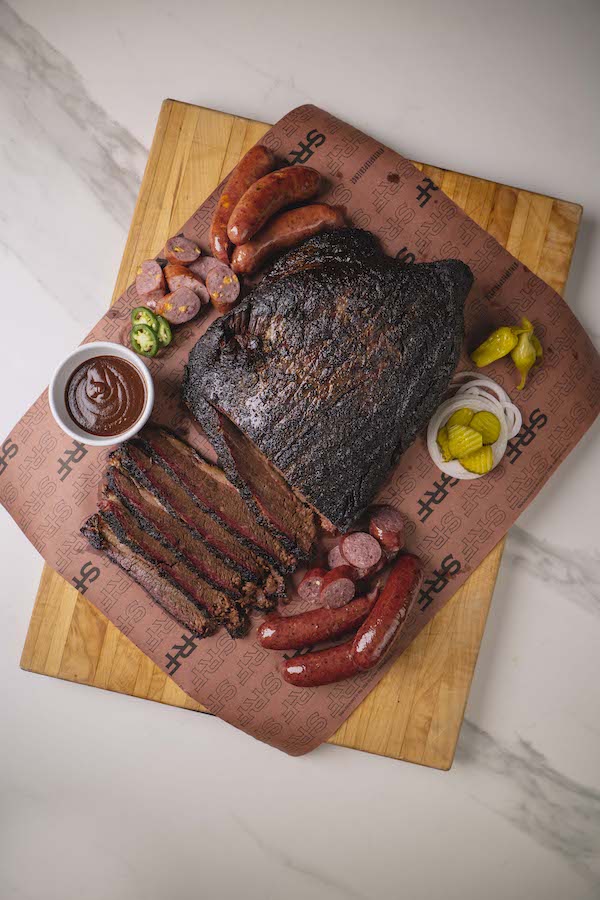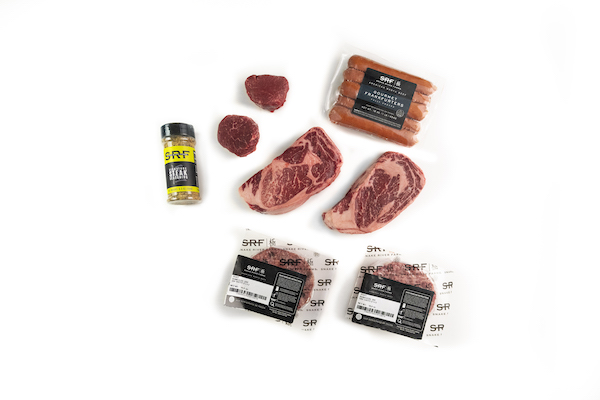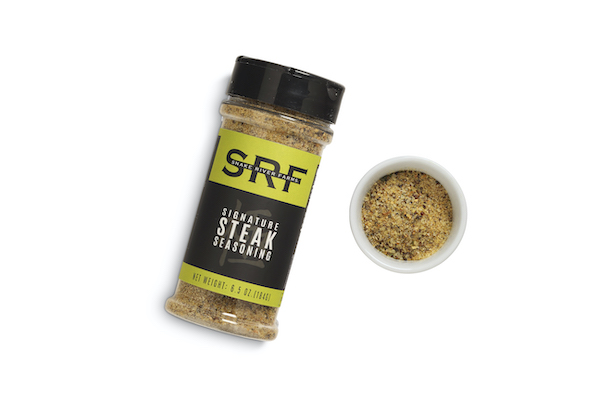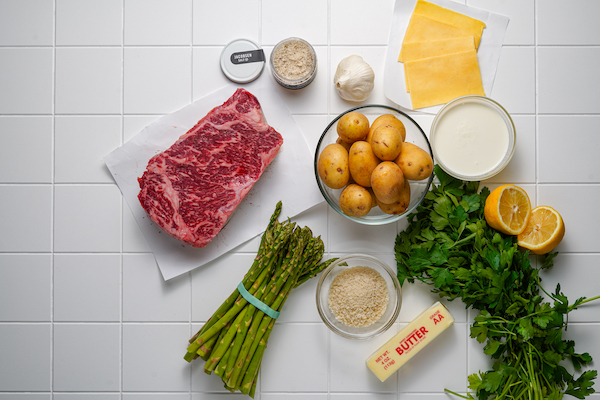A Guide to the Primal Cuts of Beef
We can all agree that a superior steak is a thing of beauty. Whether you like to cover your plate with an impressive bone-in ribeye or savor the buttery decadence of a filet mignon, there's just nothing like beef from snakeriverfarms.com to satisfy your inner carnivore's craving.
But have you ever wondered where your favorite cuts of beef come from? Which cuts are the most tender? Which beef cut is best for a family get-together or an intimate dinner for two? This guide may help you get some answers to those burning (or grilling) questions. If you still crave info after digesting our tidbits on beef cuts, you can always contact our customer care representatives. They're happy to help!





PRIMAL VS. SUBPRIMAL CUTS
Let’s start with how meat is separated from the animal carcass. Primal cuts are the first to be made in the butchering process — not to be mistaken for Prime cuts, which refers to a high-quality finished cut of beef. There are eight cuts generally recognized as Primal that indicate where they originate on the animal:
- Chuck
- Rib
- Loin
- Round
- Flank
- Short Plate
- Shank
- Brisket
After the Primal cuts come the Subprimal cuts, which are made from the original sections. Subprimals are also large cuts, just broken down from the primals. Steaks, roasts and other cuts are cut from the subprimals.
Flavor and texture are both affected by these attributes. Cuts of beef from lesser-used muscles, like the loin, are very tender with a mild flavor whereas cuts from muscles that get used a lot, like the chuck or round, are tougher but richer in beefy flavor.
The sweet spot for steaks is between the two in the rib section, aka the “middle meats.” Note that marbling is important for both texture and flavor no matter what cut of beef you choose.
SUBPRIMAL CUTS OF BEEF, BY REGION
Subprimal cuts from each region of the cow carcass are listed below, including cuts of American wagyu beef, cut to the perfect thickness and available for delivery.
RIB REGION
Ribeye – Cut from the beef rib. One of the most tender beef cuts because of marbling. Prepared from the boneless Beef Ribeye. The Ribeye cut is convenient and versatile. These boneless steaks can be prepared for a variety of menu options. The Ribeye steak cut of beef is fine-grained and full-flavored with generous marbling. Offers great plate coverage and impressive presentations. Also known as the Ribeye.
Cap of Ribeye – Cut from the beef rib region, which is the outer cap you see on a ribeye steak. The Cap of Ribeye is one of the most flavorful and tender steaks. Cut from the third most tender muscle. Rich and satisfying taste. Easy to prepare, perfectly cut steaks in a variety of sizes. Indulgent quality and flavor. Prepared from the Spinalis Dorsi/Multifidus Dorsi muscle from any Ribeye Roll item. To portion, slice the Ribeye Cap at a right angle to the grain or direction of muscle fibers. Also known as Spinalis Dorsi, Deckle Steak.
Prime Rib Roast – Also cut from the beef rib region, this is the roast form of a ribeye steak. One of the five most tender beef cuts. On menus as Prime Rib, Beef Rib is the most classic of beef roasts. Also known as English Cut, King Cut, Queen Cut and Prime Rib Roast.
LOIN REGION
NY Strip – Cut from the beef loin. Strip Steaks are some of the most indulgent, luscious and satisfying steaks. Superb taste and flavor make them one of the most tender cuts of beef. New York Strip is a tender, flavorful cut that satisfies with a superb eating experience. Also known as Kansas City Steak, Club Steak or Delmonico Steak.
Tenderloin Filet – Cut from the beef loin. The Tenderloin Filet is a highly valued cut that offers versatility in portion sizes, menu applications and preparation. Cut from the most tender muscle. Fine, buttery texture. Also known as Tenderloin Steak or Filet Mignon.
T-Bone – Cut from the shortloin. The T-bone combines two tender steaks, a Strip Steak and a Tenderloin Steak or filet mignon, connected by the T-shaped bone. Tender, flavorful cut that delivers a quality eating experience. Offers good plate coverage and dramatic presentations.
Tenderloin Roast – From the beef loin region and cut from the most tender muscle, Tenderloin is always a favorite for special meals. Tender, flavorful cut that delivers a quality eating experience. Easy to prepare, requires short cooking time.
SIRLOIN REGION
Top Sirloin – Cut from the beef sirloin. Boneless cut from the Top Sirloin Butt that is trimmed of all visible fat. Perfectly portioned four- to 10-ounce filets. Well-flavored, moderately tender beef cut that’s juicy and delicious. One of the most versatile cuts. Also known as Baseball Cut or Sirloin Steak.
Tri-Tip – Cut from the beef sirloin region. The Tri-Tip portion of the Bottom Sirloin remains after the removal of the flap and the ball tip. It is a triangular-shaped muscle and may have up to 1/4-inch fat covering. Tender and boneless cut that offers the same great taste as Top Sirloin. Also known as Beef Loin, Bottom Sirloin Butt, Bottom Sirloin Roast or Triangle Roast.
CHUCK REGION
Flat Iron – Cut from the beef chuck, the Flat Iron is actually the second most tender beef muscle. Flavorful, juicy, well-marbled steak, ideal for a variety of menu applications. Cut from the Chuck Shoulder Clod Top Blade Roast, cutting along the thick internal connective tissue results in two halves that resemble a small Flank Steak. Also known as a Boneless Top Blade Steak or Shoulder Top Blade Steak.
Teres Major – Cut from the beef chuck, teres major is a juicy muscle from the shoulder near the top blade. Offers versatility and upscale plate presentation similar to Beef Tenderloin (Filet Mignon). Also known as Chuck Shoulder Tender, Petite Tender Medallions or Shoulder Tender Medallions.
BRISKET REGION
Brisket – Cut from the beef brisket. A delicious, boneless cut that's ideal for a variety of dishes. Typically used for regional barbecue items, pot roast and corned beef.
PLATE REGION
Plate Ribs or Short Ribs – Cut from the beef rib region. Consists of the rib section from any rib and/or plate item and contains at least two but no more than five ribs. Rich, deep flavor. Plate ribs are ideal for signature rubs and sauces and adaptable to various flavor profiles. Great for homestyle comfort food. Short ribs are frequently cut into individual pieces. They are also cut across the bone into thick or thin crosscut pieces and can be served boneless.
Skirt steak – Cut from the beef plate. Long, flat muscle cut from the beef flank and plate commonly used for fajitas. Flavorful steak ideal for a variety of dishes. Skirt Steak comes from the trimmed, boneless portion of the diaphragm muscle, which is attached to the sixth through 12th ribs on the underside of the short plate. Ideal with a tenderizing marinade. Carve thinly across the grain to promote tenderness. Also known as Fajita Steak, Inside Skirt Steak, Outside Skirt Steak or Philadelphia Steak.
FLANK REGION
Hanger Steak – Cut from the beef flank. The Hanger Steak comes from the hanging tender which is the portion of the diaphragm muscle that is attached to the back section of the last rib. Also known as Hanging Tender.
Flank Steak – A single flat muscle cut from the flank region. Flank Steak is a versatile cut ideal for virtually every cooking style and multiple menu applications. Robust, beefy flavor. Also known as Beef Flank, Flank Steak Filet, Jiffy Steak or Plank Steak.
SHANK REGION
Fore Shank - Cut from the Shank primal at the leg area of the cow, beef from Fore Shank subprimal is tough, but can be used for crockpot recipes that call for a low and slow cooking
Ground Beef - Since the Shank Region is one of the toughest areas of the cow, it’s a prime candidate for Ground Beef, among trimmings from other primals.
SHANK REGION
Top Round - Top Round Steak is a large subprimal cut of beef. It is lean and flavorful, and is the cut of choice for dishes like roast beef.
Eye of Round - Cut from the round region of the cow, the Eye of Round steak tends to be a cheaper and tougher cut ideal for hearty stews where cook times are long.
Bottom Round - Similar to Top Round but a tad smaller, Bottom Round Steak is a lean subprimal cut with a tougher grain. Bottom Round Steak is a great choice for chili recipes, or for braising.

